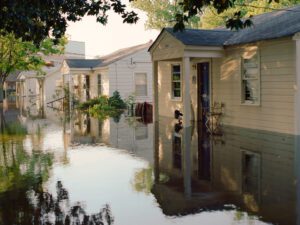“Florida is ghastly and very pleasant where I am” wrote American photojournalist Walker Evans (1903-1975) in 1934. Over 80 years later, visual artist Anastasia Samoylova (b. 1984) told The Guardian: “Miami has a vivid, absorbed imagery that precedes one’s firsthand experience and that American dream idea is foregrounded in all the billboards that are now an embedded part of the architecture.” Both creatives acknowledge two sides to the US state – its “pleasant” perfection and its “ghastly” flaws. Approximately 140.6 million tourists flocked to the home of Disney World last year. Outsiders conjure visions of Florida with the help of movies, adverts and social media, as Samoylova rightly points out. It’s a place where fantasy and reality collide, a subtropical paradise simultaneously threatened by hurricanes and rising sea levels, a refuge for extremism and eccentricity. Now, The Metropolitan Museum of Art, New York, explores how two leading photographers have pictured the region in Floridas: Anastasia Samoylova and Walker Evans.


“Ghastly” and “pleasant” were the contrasting adjectives Evans used to describe the Sunshine State after his very first visit. Over the next 40 years, he would visit the state multiple times to picture its unique landscape. Evans is best known as one of the key figures of documentary photography, having taken numerous photographs that serve as a record of the hardships faced by many during the Great Depression. However, his Florida images form part of a little-known collection filled with black-and-white landmarks, from real estate billboards to souvenir stands. Trailer in Camp Sarasota, Florida (1941) shows the titular vehicle parked next to a palm tree. Telephone wires cut the sky overhead in a greyscale world, contributing to a scene that is far removed from the saturated portrayals of the state we might be more used to seeing.

Samoylova shares her perspective with the Floridas (2016-2019) series, taking us into the 21st century. Born in Russia, Samoylova immigrated to the USA in 2008 and has lived in Miami since 2016. Her practice follows the documentary lineage of forebears like Walker Evans and Beatrice Abbott, whose works confronted American audiences with the stark realities of economic disparity and the eroding American dream. She is famous for the Floridas series. In 2016, she embarked on a road trip across the state and trained her lens upon the zone’s complexities and contradictions. We see a beachgoer’s sunburned torso tattooed with guns and a velvet sofa bobbing in a flooded street. Elsewhere, a seaside road looks utterly destroyed after a hurricane whilst a line of palm trees tilt drunkenly into nearby houses after a storm.


Across generations, Evans and Samoylova capture the duality of the Sunshine State. The Metropolitan Museum of Art hosts Samoylova as the first living woman photographer to headline an exhibition there since Helen Levitt in 1991. Long overdue, this marks a significant achievement for Samoylova and the opportunity for wider audiences to engage with her work. At the same time, this exhibition is bringing to light to rare work from Evans, a pioneer of the medium. This show is a chance to consider Florida beyond the headlines, commercials and film sets. We are left to consider: what is beneath the surface?
The Met, Floridas: Anastasia Samoylova and Walker Evans | 14 October – 11 May
Words: Diana Bestwish Tetteh
Image Credits:
- Anastasia Samoylova, Pink Sidewalk, 2017.
- Anastasia Samoylova, Blue House after Flood, 2023.
- Anastasia Samoylova, Alligator, Anastasia Island, Florida, 2024.
- Anastasia Samoylova, Beauty Salon, Milan, 2022.
- Anastasia Samoylova, Pink Sidewalk, 2017.
- Anastasia Samoylova, Blue Velvet Chair, 2020.





